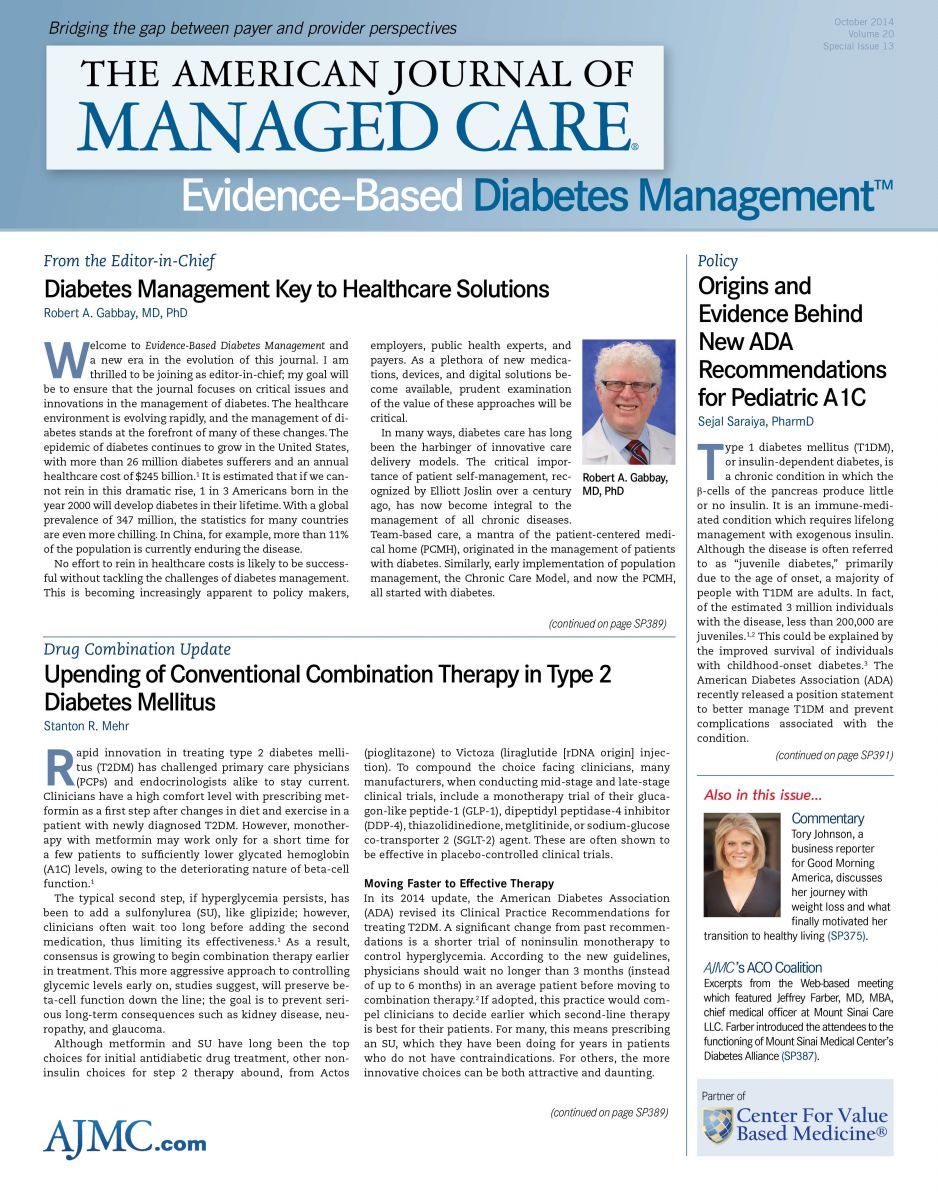- Center on Health Equity & Access
- Clinical
- Health Care Cost
- Health Care Delivery
- Insurance
- Policy
- Technology
- Value-Based Care
Diabetes Management Key to Healthcare Solutions
From the Editor-in-Chief
Welcome to Evidence-Based Diabetes Management and a new era in the evolution of this journal. I am thrilled to be joining as editor-in-chief; my goal will be to ensure that the journal focuses on critical issues and innovations in the management of diabetes. The healthcare environment is evolving rapidly, and the management of diabetes stands at the forefront of many of these changes.
The epidemic of diabetes continues to grow in the United States, with more than 26 million diabetes sufferers and an annual healthcare cost of $245 billion.1 It is estimated that if we cannot rein in this dramatic rise, 1 in 3 Americans born in the year 2000 will develop diabetes in their lifetime. With a global prevalence of 347 million, the statistics for many countries are even more chilling. In China, for example, more than 11% of the population is currently enduring the disease.
No effort to rein in healthcare costs is likely to be successful without tackling the challenges of diabetes management. This is becoming increasingly apparent to policy makers, employers, public health experts, and payers. As a plethora of new medications, devices, and digital solutions become available, prudent examination of the value of these approaches will be critical.
In many ways, diabetes care has long been the harbinger of innovative care delivery models. The critical importance of patient self-management, recognized by Elliott Joslin over a century ago, has now become integral to the management of all chronic diseases. Team-based care, a mantra of the patient-centered medical home (PCMH), originated in the management of patients with diabetes. Similarly, early implementation of population management, the Chronic Care Model, and now the PCMH, all started with diabetes.
The good news is that the last 2 decades have brought a greater understanding of approaches to prevent complications of diabetes—the primary driver of diabetes costs. Appropriate control of blood glucose, blood pressure, and cholesterol, along with early screening for complications, have been clearly shown to decrease the potentially devastating long-term complications of diabetes, which include kidney failure, amputation, blindness, and cardiovascular disease. The challenge has been to ensure that those with diabetes meet these evidence-based goals. Much of the work in this arena will be based on improving our healthcare delivery system, making wiser choices regarding treatments, engaging patients, and achieving better coordination of care. Evidence-Based Diabetes Management will focus on covering this evolving field to better guide all of us in making the optimal choices in the management of this challenging disease.
Reference
1. American Diabetes Association. Economic costs of diabetes in the U.S. in 2012. Diabetes Care. 2013;36(4):1033-1046.

Exploring Pharmaceutical Innovations, Trust, and Access With CVS Health's CMO
July 11th 2024On this episode of Managed Care Cast, we're talking with the chief medical officer of CVS Health about recent pharmaceutical innovations, patient-provider relationships, and strategies to reduce drug costs.
Listen
Integrated Care for Chronic Conditions: A Randomized Care Management Trial
December 3rd 2025The authors sought to understand the differential impact of payer-led community-based care management approaches on stakeholder-oriented outcomes for publicly insured adults with multiple chronic conditions.
Read More
